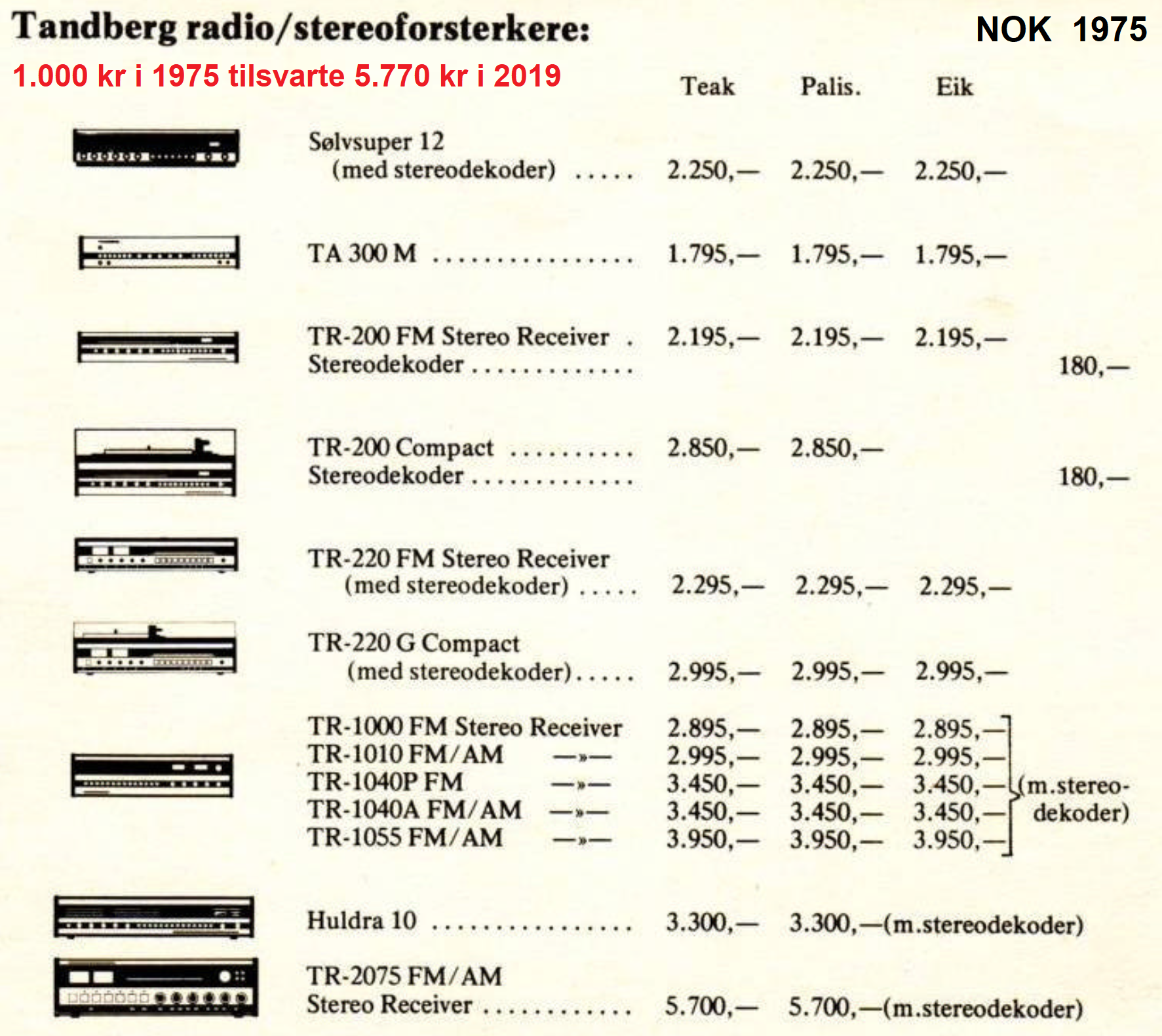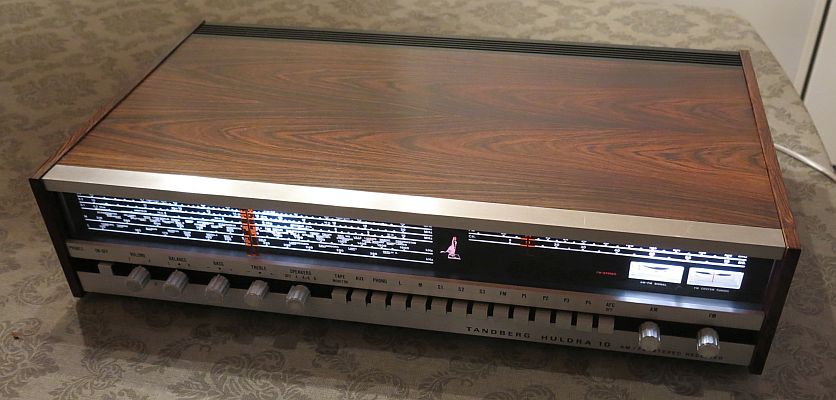
tandberg/h10/priser1975.png
To view high resolution images, right click on image and select View image or Save image
Among a majority of users of vintage Tandberg receivers it seem to be an agreement that the Huldra 10 (H10) are to be considered "the best" sounding. Or possible more accurate explained, — the warmest sounding of Tandberg's amplifiers with unique timbres and nerve. Much of its sound character stems from its discrete build and the single supply push-pull transistor power amplifier with a big capacitor in series with the speaker output.
Still Huldra 10 second hand prices do not confirm this expressed admiration compared to some other models often mentioned when users ask for buying recommendation of Tandberg amps or receivers.
Trying to better understand as to why this is, and to clear some misconception found online we had a deep dive into schematics and forum posts.
Below we've broken down each model to show some of the differences with focus on amplification function only. With one exception none of the often recommended models should sound "as" a Huldra 10. We asume they all sound good of course, but why would the marked upscale prices on some of those other models rather than the Huldra 10 itself that everyone compares to?

"Closest I came to tube sound without the hassle of tubes"
"Tandberg did well with the transition from tubes to transistors"
anonymous forum members
TBA231 vintage equivalents: uA739, MC1303, SN76131, LM1303N, RC4739, XR4739. Modern equivalents: NTE725 and ECG725
While they can substitute each other there are sound differences.
Trying to understand how Huldra 10 has its long production run it seems it were aimed at the radio listener wanting the best possible radio receiver. Keeping the well renowned model name Huldra 10 had at least four upgrades throughout its lifespan. The phono amp and the others to better the FM tuner.
While TR-1000 more excited people looking for a hub for they're music gear — with more power, phono input and up to three tape machines. All this at a tiny bit lower cost. It nevert got the upgradet phono amp from H10 before it where replaced by the more powerful TR-1040 which also first started out with the TBA231.The mother of all, the Huldra 10 could benefit from having the transformer and power supplies from the TR-1000. Combined with RCA in/outputs with corresponding voltage levels — luckely later are a very easy fix. The soon to become 50 year old 4700µF cap in the power supply need to be replaced anyway, fitting a 10.000µF cap in its place are an easy fix to noticeably better the power supply — this without having to implement any inrush scheme.
TA-300's simpler mains transformer with power supply makes it so it doesn't quite reach up to H10 standard. But still it is the closest contender of the bunch seen from a technical standpoint. TA-300 also respond well to better and bigger caps in the power supply. It's also have an line input with a active circuit (2.7x gain) before the volume control if driving a weak sourche are needed which H10 and TR-200 are missing.
TR-1000/1010 are thoughtfully build and somewhat easier to implement into a modern stereo system with its RCA connectors and line levels. It misses the discrete phono preamp/riaa which came back with TR-1040 and continued with Huldra 11/12 and most if not all of the series TR-2000. There are some users that actually prefer this op-amp circuit over the discrete version.
TR-1040/1055 being the first receivers with dual voltage supply, starting the trend from Tandberg building more powerful output stages with new set of design challenges and new overall sound coloration. That said, everything else about them are desirable where also the discrete phono riaa/preamp came back from s/n 1426000. They still use the same output transistors as TR-1000 but the differential power supply now have a total voltage swing of 80 and 90VDC — up from 64VDC in the TR-1000.
TR-200 may possibly originate from HiFi-FM, — i.e. years before H10. Owners says this amp sounds sweet and punch harder than what it seemenly should be capable of. It has the same IC phono amp as TR-1000/1010 and what looks like a very scaled down H10 scheme. Some of the simplification might even be considered favorable for vintage gear with less mechanical switches to accumulate contact issues.Huldra 9 (1968) still uses tubes in the radio tuner. For it's time the ultra modern appearance still seem to provoke collectors today. It's 2x25W single supply push-pull power amp and FM tuner supposedly sounds good.
HiFi-FM (1968) are sometimes referred to as an early TR-1000 (1972). Not being branded Sølvsuper and sized similar to TR-1000 might be the main reason for this. With only 2x15W and schematics much closer to TR-200 (1971) with its simpler power supply, 2x2N5492 output transistors and DIN only connectors one could argue how accurate this is.Later models from Huldra 11 (TR-2025MB), Huldra 12 (Multi Band version of TR-2030*) and the rest of series TR-2000 including later series 3000/4000 all made use of todays more traditional differential amplification technology, — by some defined as more analytic and cold sounding. Maybe with the exception of TR-2075 mkI and TR-2055 both actually from the end of this period we've not been able to find this kind of praising for a single product line like these models that sprong out of the Huldra 10 timeline.
*TR-2030, TR-2030L, TR-2045 and Huldra 12(MB) all share parts list. H12 2x32W later came in a more powerful 2x60W version.
tandberg/h10/priser1975.png
To view high resolution images, right click on image and select View image or Save image
Select file from list below
Your comment are welcome